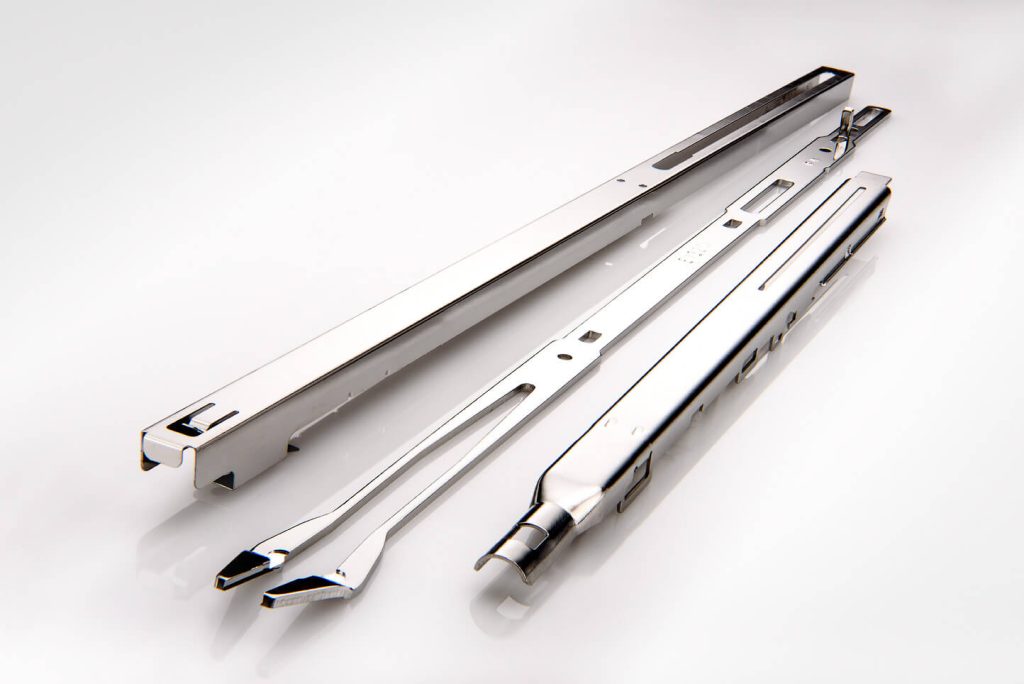What is RA and RMS?
RMS and RA are two of the most widely used tools for measuring metal surface roughness. RMS stands for Root Mean Square and is used to measure the surface roughness of irregular surfaces. It is calculated by taking the square root of the sum of the squares of the differences between the measured values and their mean. RA stands for Arithmetic Average and is used to measure the average of the absolute values of the surface roughness. Both RMS and RA are effective tools to measure the efficacy and results of stainless steel electropolishing.
Accurately Measure Metal Surface Roughness and the effects of Electropolishing with RA and RMS
Using RMS and RA for metal surface roughness measuring provides several advantages, including accuracy and precision. With RMS and RA, you can accurately measure the surface roughness of any irregular surface, giving you an accurate representation of the texture and pattern of the surface. When it comes to electropolishing this helps to determine the best variables for surface finish for specific parts and applications.
Measurement of Ra
Ra, or “Roughness Average”, is a common measurement used to measure the surface roughness of metal surfaces. This method requires the use of a professional-grade profilometer to determine the average deviations from the mean line of the surface. The Ra measurement is then used to determine the profile of the metal surface, providing an accurate and reliable result.
Measurement of RMS
RMS, or Root Mean Square, is another common method used to measure the surface roughness of metal surfaces. With this method, a professional profilometer is used to measure the vertical distance between the peaks and valleys of the surface. The RMS measurement is then used to calculate the average surface roughness, providing an accurate result.
Achieve Accurate Results with RA & RMS
When it comes to measuring metal surface roughness, RMS and RA are great tools for achieving accurate results. These tools allow you to accurately measure any irregular surface and give you an accurate representation of the texture and pattern of the surface. RA and RMS are just some of the tools that we use at NEE to get precise measurements and achieve the perfect finish with repeatable results.
Electropolishing Resources

What is Electropolishing?
Electropolishing is an electrochemical and reverse plating process that removes the outer layer of skin on a metal...

The Electropolishing Process
The electropolishing process is initiated by immersing a metal part into a temperature-controlled bath of electrolyte...

Benefits of Electropolishing
Curious about the benefits of putting your parts through the electropolishing process? Read along below where we...

How Much Material Does Electropolishing Remove?
Electropolishing, when done properly is a highly controllable process which removes as little as...

How Much Will Electropolishing Improve the Surface Finish of My Part?
Ra and RMS are both representations of surface roughness. Ra is calculated as the roughness average of a surface’s...

Electropolishing Frequently Asked Questions
Learn the difference between electropolishing and electroplating as well as how the electropolishing process works...

What is ASTM B912?
ASTM B912 is an industry standard for the passivation of stainless steel alloys through electropolishing...

What is ASTM A967?
ASTM A967 is an industry standard specification for the chemical passivation treatments for stainless...

What is ISO 13485?
ISO 13485 is a standard that applies specifically to medical devices. ISO 13485 is designed to be...
